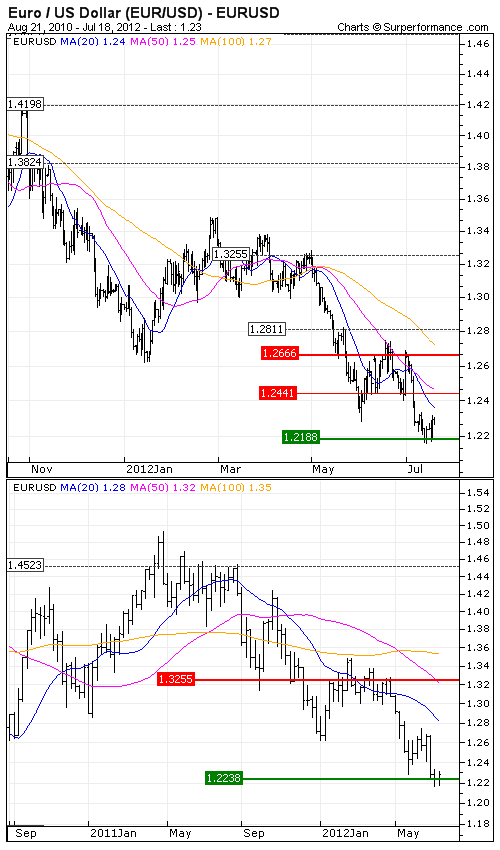Euro / US Dollar (EUR/USD) : Focus on FED
By Mathieu Burbau
The enthusiasm of the EU summit seems far away after the complaints in Germany against the ESM ratification and the announcement of new austerity measures up to € 65 billion in Spain. The Constitutional court in Karlsruhe is studying the protests across the Rhine and release its decision on September 12 while the Eurogroup will finalize the plan to help the Spanish banking sector during a teleconference this July 20. After announcing to be able to pay an initial tranche of 30 billion euros by the end of the month and allowed Madrid to reduce its deficit to 3% in 2014, the finance ministers of the eurozone are now expected about details on the recapitalization plan of Iberian banks.
Meanwhile, macroeconomics in China, engine of the global economy, shows an inflation rate in June to the lowest for almost two and a half years. The growth is the lowest for three years, although it is up to +7.6% yoy in the second quarter, in line with economists expectations.
In the U.S, the FED minutes and comments from Ben Bernanke to Senators suggest, without giving details about their nature or the timing, that the institution stands ready to further actions to support the U.S. economy.
Graphically, the relative weakness of the dollar enables to the euro to remain between USD 1.22 and 1.23. Despite a trend heavily bearish on all time scales, the anticipation of new flexibilities across the Atlantic could lead to a sharper decline in the dollar, prompting us to focus on short selling of euro against other major currencies such as AUD, CAD or NZD.





